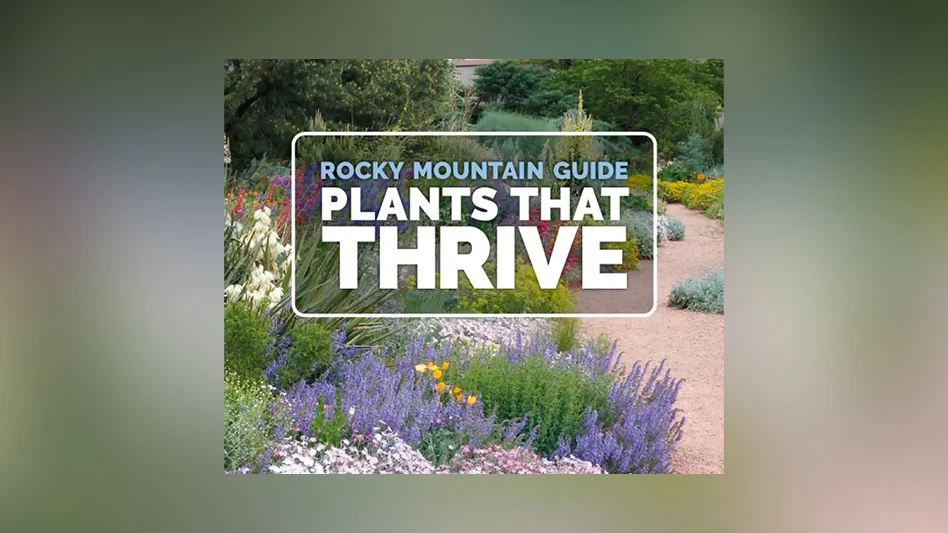
 First off, congratulations! The fact that you’re reading this story suggests you have successfully navigated some pretty tough waters the past two years. Indeed, you’ve stared down the economy until it finally blinked and weathered whatever literal storm blew your way. You’ve grabbed hold of the horns of the toughest bull in the arena and held on—not just for an eight-second ride, but for two oh-so-wild years of bucks and turns the likes of which this industry hasn’t seen in a while.
First off, congratulations! The fact that you’re reading this story suggests you have successfully navigated some pretty tough waters the past two years. Indeed, you’ve stared down the economy until it finally blinked and weathered whatever literal storm blew your way. You’ve grabbed hold of the horns of the toughest bull in the arena and held on—not just for an eight-second ride, but for two oh-so-wild years of bucks and turns the likes of which this industry hasn’t seen in a while.
Maybe ever.
And now, as you gear up for another spring, you do it with the knowledge that whatever is ahead is almost certainly better than what was just behind. And you come armed with the “been there, done that” mettle that is reserved for survivors.
But—we’re making an educated guess here —you’re not the type who just wants to survive. Indeed, you’d much prefer to thrive, and because of that, we’ve put together this veritable “Thriver’s Guide” to highlight the trends we believe you’ll need to know and understand to turn 2011 into your best year yet.
We can’t guarantee that all of these factors will factor into your bottom line next spring. But we can assure you this: The following “greatest hits” collection from our editors—Yale Youngblood, Sarah Martinez and Ian Baldwin—is born from a collective 50-plus years of taking this industry’s pulse.
In other words, you might want to take notes …
Yale Youngblood, Publisher/Editor
Gardening with a purpose
Susan McCoy isn’t a doctor—for that matter, she doesn’t play one on television— but she has shown a knack over the years for having a finger on the industry’s pulse. And the Garden Media Group’s chief idea generator has surveyed the landscape, as it were, and predicted that in 2011, “gardening with a purpose” will really take root.
We whole-heartedly concur.
As McCoy noted, the purpose may be to grow your own food or create urban “green” sanctuaries, but planting for a greener good is likely to change neighborhoods and communities—one garden at a time.
“We had trouble wrapping our heads around saving the rain forests,” she said, “but we clearly can wrap our arms around saving our own backyards. Digging and planting gardens brings awareness that we’re all earth’s caretakers.”
As a result, “New Era” gardeners/backyard conservationists will probably spend 2011 transforming yards, gardens, rooftops and even urban alleys into green and productive spaces, knowing they are making a positive impact.
Further, conservative choices—that is, choices that serve to conserve and promote environmental stewardship—should do “the domino thing” in the areas of irrigation (see rain barrels and rainwater recovery systems), lawn and patio décor (see pondless waterfalls and self-contained fountains), and plant enhancement (see natural fertilizers and plant foods).
The rise of the perennial
Here’s another note from the Garden Media Group we found intriguing: The group’s research showed sales of annuals to be down almost 20 percent in 2011. But this isn’t necessarily bad news—it’s actually more of a window opening as a door begins to shut.
We’re hearing from retailers that gardeners across the country are replacing the long-standing color staples with long-blooming perennials and ever-blooming shrubs. This trend was almost inevitable, especially considering a movement among Gen X gardeners that places a premium on big color-bang for little maintenance buck.
In 2011, perennials should continue to catch the young shoppers’ collective fancy—ditto, a bevy of other plants that don’t require a lot of tending but still keep a garden looking fresh, sometimes year-round.
 2011 will be the year of the “happy garden,” so get ready to sell plants that smack of vivid color. And be ready to sell perennials next year, too.Happy gardens
2011 will be the year of the “happy garden,” so get ready to sell plants that smack of vivid color. And be ready to sell perennials next year, too.Happy gardens Happiness—specifically, the pursuit of—will continue to dominate people’s thinking as long as the economy lags, so you’ll win favor with customers if they can muster a smile every time they visit your garden center.
Where plants are concerned, brighter is better. Likewise, ornamental items will need to conjure hope/joy/optimism/knee-slapping chuckles in 2011. The garden will be even more of a retreat for the aficionados than it has been in past years. It’s likely the economy has whittled the travel budget for many, so your store should be a veritable Disney World for grownups when they pull up and walk in.
This should be a great year for “cool” items, such as bird-and-nature-friendly products that are as attractive as they are functional, or pathway lights that soak up the sun by day and then use its power to glow under the moon in the late evening. Containers should always complement the plants they hold, but “late model” planters that also define an environ, either as elegant or whimsical, will gain special favor from shoppers next year.
Harking to the aforementioned purposeful garden, you’ll do well to set up display gardens that have a theme—create a “veggie haven” or a “butterfly retreat” or “Mom’s special spot,” complete with plants and decorative items that team to say, “yeah, you need to do this in your yard.”
Sarah Martinez, Managing Editor
Behold, the age of smartphones
Smartphones will change the way you retail in 2011. These devices have taken over the tech world, point blank. Their very existence serves as a conversational ice breaker: “Are you on an iPhone, Android or BlackBerry? How do you like it?”
These devices have become intimately intertwined with shopping. With a few taps on a touch screen, users can compare prices and offerings at different stores, call retailers with one-touch dialing and get turn-by-turn directions to the nearest location.
Hold on tight. Here are some eye-opening statistics from National Retail Federation’s recent holiday survey:
Mobile devices like iPhones and Androids are becoming more popular among consumers, and many shoppers plan to use these devices this holiday season to look for gift ideas, compare prices and find items in nearby stores.
According to the survey, over one-fourth of American adults with a smartphone (26.8%) will use these devices to research or make holiday purchases, and that number jumps to 45.0 percent among young adults 18-24. Retailers are expected to take advantage of this trend by offering more robust mobile apps and websites, along with enhanced features like mobile reviews, to cater to Americans looking to shop from their phones.
What does this mean for garden retailers?
- You need a mobile version of your website. This stripped down version is easier to navigate on a smartphone. Talk with your web developer/company about creating one.
- Don’t, however, get talked into creating a store-centric smartphone application. More than likely, you won’t see widespread adoption of it. Instead, look into existing plant-centric apps already on the market, like GardenPilot.
- Be prepared for pointed questions. In the coming years, you’ll see more customers standing in front of displays, eyes darting between your store signage and their smartphone. Consumers will need your help navigating and digesting information from BOTH of these sources.
- Learn about QR (Quick Response) codes and Microsoft Tags. You’ve been seeing more of those “funky barcodes” lately, right? Smartphone users scan these tags to go directly to information related to a product or publication. Expect to see more of them in coming years. And you might even see major growers adopting these codes/tags in the near future.
Gardening is for foodies
In 2011, garden centers need to recognize a crucial element in the veggie-gardening craze: It’s not about the gardening at all. It’s about the food.
A lot of retailers fancy they’re cultivating “gardeners for life” thanks to America’s newfound love of fresh produce. The harsh reality is many of these customers won’t segue to the flower-and-shrub-gardening clan. Gardening is a means to an end: They love good food; they want homegrown taste, therefore they garden.
Take a look at these numbers from Garden Writers Association Foundation’s 2010 Summer Gardening Trends Research Report: Over one half (53%) of U.S. households with a lawn or garden reported they grow vegetables in their garden, while 47 percent do not. The top outcomes of the vegetables being grown include:
- Eat fresh (90%)
- Share with friends and family (66%)
- Preserve for later (36%)
To keep the foodie demographic in the fold, garden-retailers have to do a better job tapping into their unique sensibilities.
- Partner with local gourmet markets.
- Sell plants at your area’s farmer’s market.
- Create a year-round spot in your garden center solely dedicated to edible plants.
- Have plenty of edible impulse-buys during the height of the season: herb container gardens, pre-planted strawberry jars, citrus pots, etc.
- Stock a carefully selected offering of gourmet “pantry foods” in your gift area. Things that tie in specifically with the green goods you’re offering.
Green will be more than organic
The Great Recession has taught us the folly of living an extreme lifestyle. In 2011 and beyond, ‘green’ will take on a bigger meaning.
Consumers will continue to strive for a “wholesome” lifestyle. How can retailers tap into this mentality?
‘Organic’ is only one piece of the puzzle. Think bigger. It’s going to take more than a selection of organic fertilizers and seeds to show commitment to wholesome living.
Locally grown/produced must be king. Shout it from the rooftops. Even better, create a logo indicating which plants and products come from within a 100-mile radius.
Use one of the end caps in your greenhouse to tell the story of one of your local suppliers, and change it out every few weeks.
Strengthen your neighborhood ties. Grab any opportunity to be more entrenched with your local community. Go beyond the standard gift-card giveaways and garden-club events. Pick two or three particularly worthy initiatives and get intimately involved.
Make a long-term commitment to a school or community garden. The past two years have seen a proliferation of school and community gardens. Brand-new gardens are fun and exciting. But a few months later the necessary evils of weeding, pruning and re-tilling arise.
As a PTA president and school volunteer, I can personally attest that ongoing garden maintenance is a thankless job. The cameras and crowds are there at the garden unveiling—not when you’re pulling nutsedge and spreading mulch. But the work must be done—otherwise these green spaces are making zero contribution to the community.
Consider your work in these gardens to be a true “tithe”—hard work, offered in secret, with little chance of recognition. Just look at it as sweat equity invested in a wholesome-living message.
Ian Baldwin, Contributing Editor
Specialty products will still find their niche
The fundamentals of high unemployment, foreclosures and debt still weigh on people’s minds, but they are choosing to shop and spend on what they think is worth the money, as Amazon’s, Apple’s, and Burberry’s financial results attest. I think this is an exciting sign for garden centers; upscale self-indulgences and specialty products are still selling well—and they symbolize a wave we, too, can catch.
Some, in fact, have already caught it. I recently turned to a client whose 2010 sales showed double-digit growth in an area where most others were down in sales and asked him the secret. His answer was simple but brilliant:
“There’s really no secret formula except that we want the place to look better than their last visit, the customer to be served better than their last visit and to tell them we have lots of deals and specials going on all the time.”
Wow, how fundamental is that?
Destination stations will dominate
As you gear for 2011, you need to remember where the “Vintage 2011” shoppers are coming from—and craft a strategy that helps those customers go where you want them to go. A great start would be to figure out how to position some of your key departments as “Destination Departments.” Think along these lines:
- Feeding the birds at home? You need to stock up on our custom bird food.
- Houseplants looking tired? Stop in and see fresh new ones.
- Lawn more like a median strip than a fairway? Come and talk to our grass gurus.
Most economists agree that consumers are not going to go on a spending binge next year, so we can’t keep hoping that a rising average sale will compensate for disappearing customers. We need to find ways that make the shopping experience special, so customers will come back.

Explore the December 2010 Issue
Check out more from this issue and find your next story to read.
Latest from Garden Center
- The HC Companies, Classic Home & Garden merge as Growscape
- Terra Nova releases new echinacea variety, 'Fringe Festival'
- Eason Horticultural Resources will now officially be known as EHR
- ScottsMiracle-Gro transfers cannabis subsidiary to focus on core lawn and garden business
- Should we start calling natives 'eco-beneficial plants'?
- Ellen Mackenbach-Lakeman appointed new CEO of Dümmen Orange
- $7,500 in therapeutic garden grants available from National Garden Bureau
- The Growth Industry Episode 3: Across the Pond with Neville Stein







